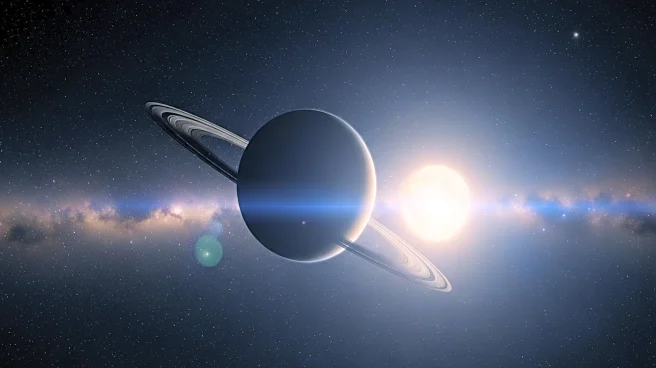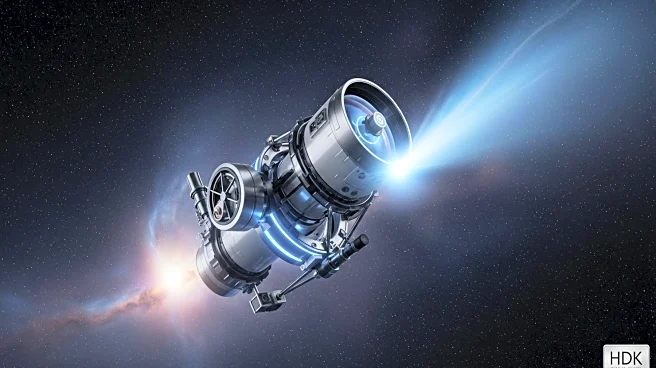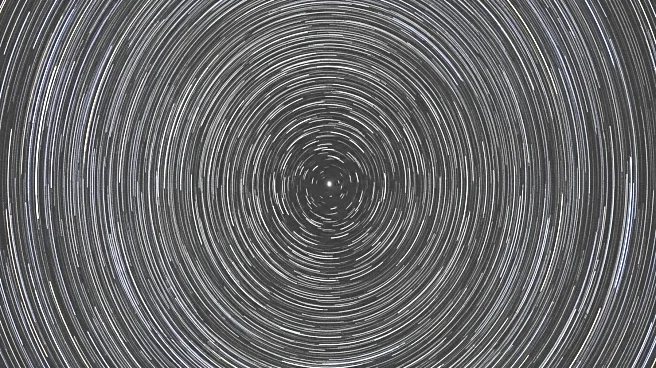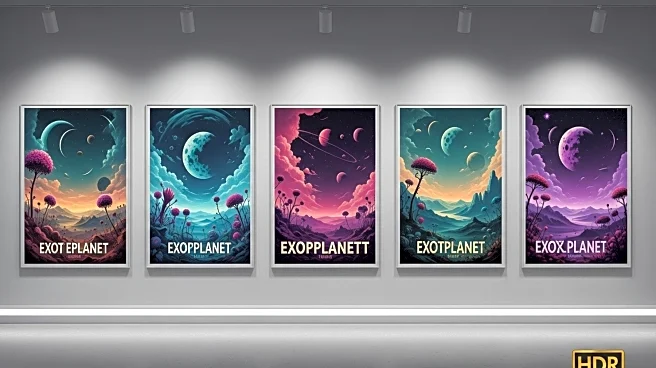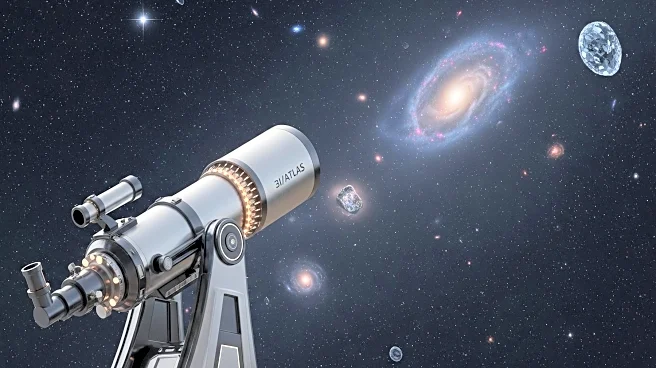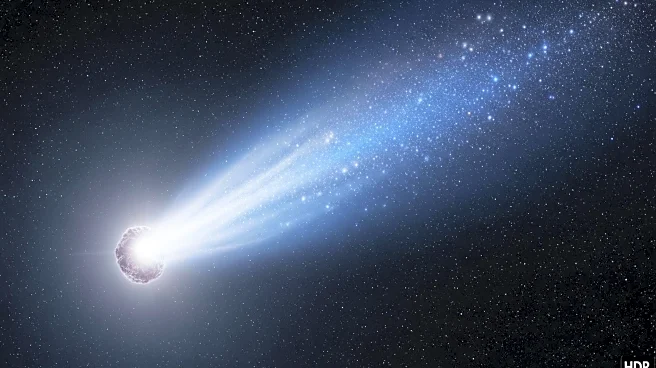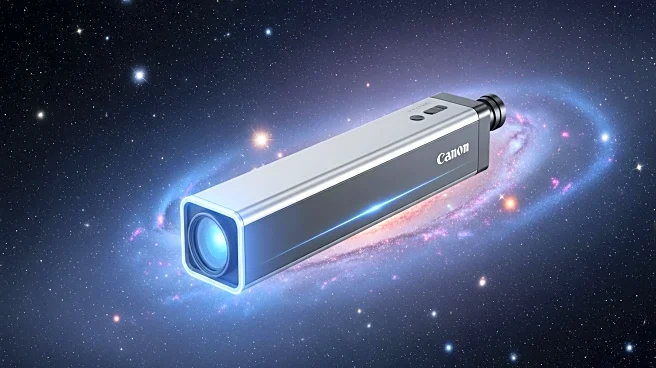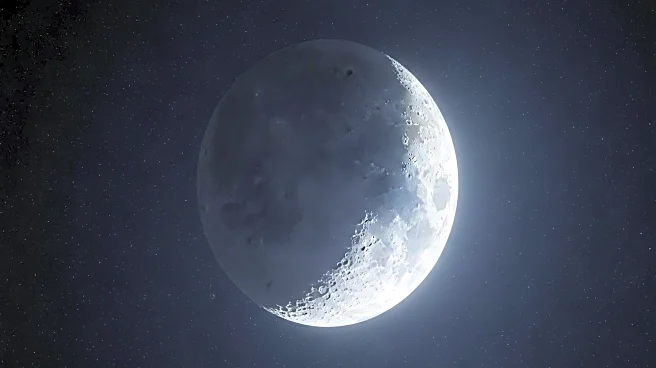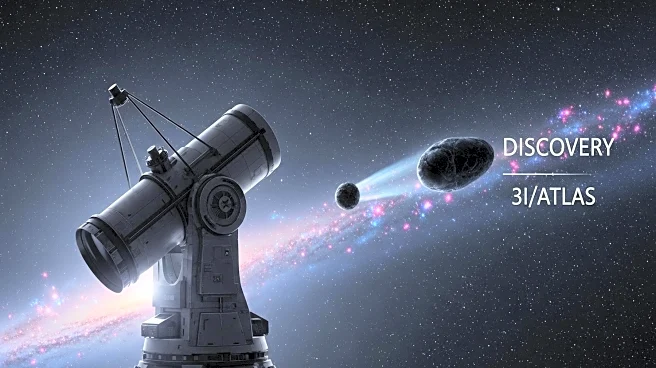What's Happening?
NASA's Transiting Exoplanet Survey Satellite (TESS) has identified two rocky exoplanets orbiting a nearby K-type star, TOI-2322. These planets, TOI-2322 b and TOI-2322 c, are comparable in size to Earth and have short orbital periods. TOI-2322 b is similar in size to Earth, with a mass less than 2.03 Earth masses, orbiting its host star every 11.3 days. TOI-2322 c is larger, with a radius of approximately 1.87 Earth radii and a mass 18 times that of Earth, orbiting every 20.2 days. The discovery was confirmed through follow-up observations using radial velocities and activity indicators.
Why It's Important?
The discovery of these exoplanets is significant as it adds to the growing list of Earth-like planets that could potentially harbor life. Understanding the composition and characteristics of these planets can provide insights into planetary formation and the conditions necessary for life. The research also highlights the capabilities of TESS in identifying exoplanets, contributing to the broader scientific understanding of the universe and potentially guiding future exploration missions.
What's Next?
Further studies are expected to focus on the detailed characterization of these planets, including their atmospheres and potential habitability. Researchers may use advanced telescopes and instruments to gather more data, which could lead to new discoveries about the planets' compositions and environments. The TOI-2322 system offers a unique opportunity to test methods for distinguishing planetary signals from stellar activity, which could improve the accuracy of exoplanet detection techniques.


